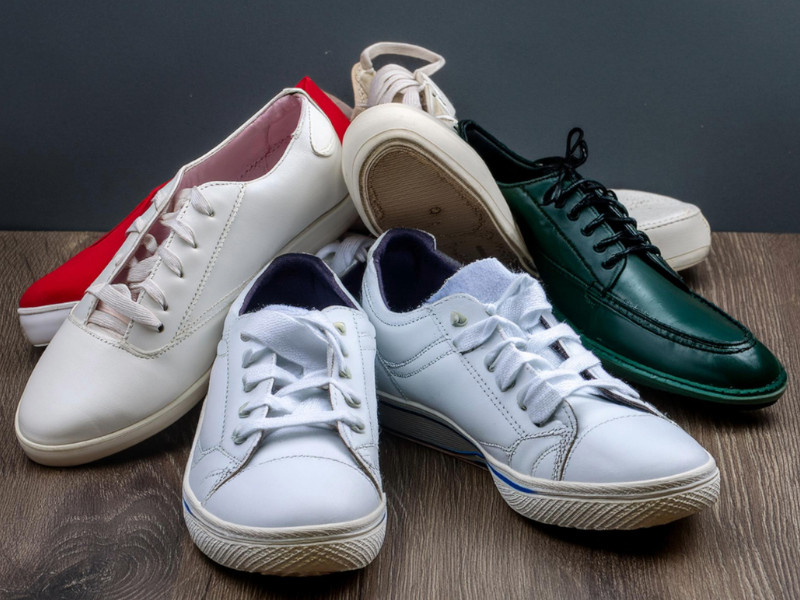
Fall Prevention: The Right Footwear Matters
One often overlooked yet significant factor contributing to fall prevention is the choice of footwear. The right pair of shoes can promote stability and help prevent accidents.
6 Steps to Choose Safe Footwear for Seniors
As we age, maintaining balance and preventing falls become crucial aspects of quality of life. One often overlooked yet significant factor contributing to fall prevention is the choice of footwear. The right pair of shoes can make a substantial difference in promoting stability and preventing accidents. Wearing shoes indoors may also be worthwhile, as walking on slippery floor with socks, is another trip hazard.
Here are some key considerations to keep in mind when selecting footwear for seniors:
1. Sturdy Soles
Opt for shoes with sturdy midsoles that are not overly flexible. Shoes that bend too readily can lead to twists or sprains, and also increasing the risk of a fall. Additionally, hard and sturdy soles offer better slip resistance compared to thinner, flexible alternatives. Choose shoes with a good tread, and replace those with worn-out treads to improve traction.
2. Correct Size
Properly fitting shoes are essential to prevent slips and maintain balance. Shoes that are too big may cause the foot to slide within, contributing to a loss of stability. On the other hand, shoes that are too tight can lead to foot pain, making it challenging to walk comfortably and focus on each step.
3. Closed Heels
For greater stability, seniors are better off to choose closed-heel shoes. Open-heeled shoes often do not fit snugly, allowing the foot to slide within the shoe, which can lead to trips or a loss of balance. Closed-heel shoes provide better support by fully enclosing the foot, reducing the risk of instability. Therefore, slide-ons with open heels are not the safest option.
To make it easier to put closed-heel shoes on, you can use a long shoehorn. Having a few around the house, e.g. in the entry way, mudroom, and wardrobe may be worthwhile.
4. Light Weight
Heavy shoes can pose a challenge for elderly, as with reduced strength, it may be more difficult to lift ones feet properly. This can result in shuffling while walking, increasing the risk of falls. An example of some lightweight shoes are Sketchers, which come in many different styles and colours.
5. Sole Material and Design
The sole of the shoe plays a crucial role in preventing slips. Avoid shoes with overly smooth soles, as they may become slippery. Likewise, soles with excessive tread may catch on the ground, leading to stumbling. Optimal soles are made of slip-resistant materials with a balanced tread design to provide stability without compromising mobility.
6. Low Heels
High heels can negatively impact posture, balance, and gait, significantly increasing the risk of falls. It is advisable to choose shoes with heels not exceeding an inch in thickness, as low-heeled shoes provide greater stability. Choosing shoes with a low heel is therefore recommended to promote stability and reduce the likelihood of twisted ankles and accidents.
Conclusion
Selecting the right footwear is a simple yet effective step in preventing falls among the elderly. By considering factors such as sole stability, size, heel type, weight, and material, seniors can enjoy improved mobility and reduce the risk of accidents. While indoors, ensure you are keeping away from slippery surfaces by either wearing indoor shoes or wearing non-slip socks.
For a free download of a Safe at Home Checklist, please click link.
The content on this website does not constitute professional advice. The information provided is for general informational purposes only. For specific and personalised advice, particularly in areas such as health, finance, or legal matters, we recommend consulting with a qualified professional in the relevant field.
We use affiliate links which means we may earn a small commission if you purchase through these links. The commission comes at no additional cost to you and helps support the maintenance and upkeep of this site.
As one ages, it does not necessarily mean losing independence or having to leave your home. We're here to share tips and tricks for creating a sustainable home environment and habits to age safely in place; Safe at Home.